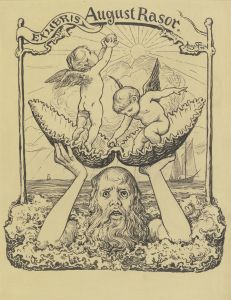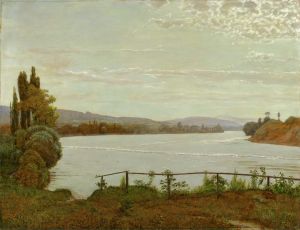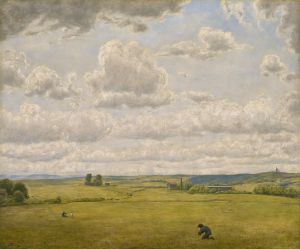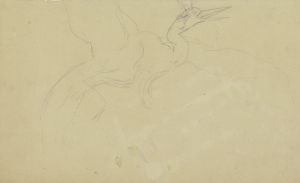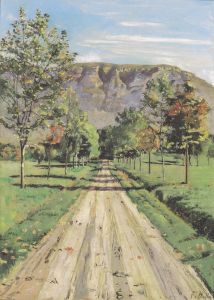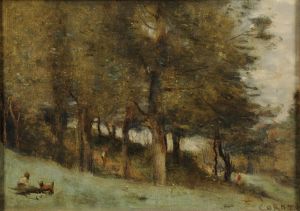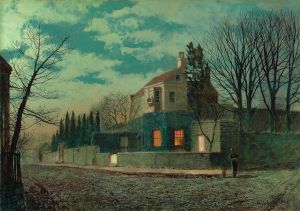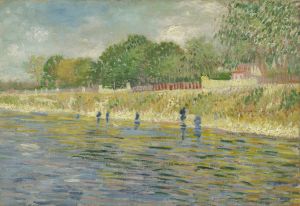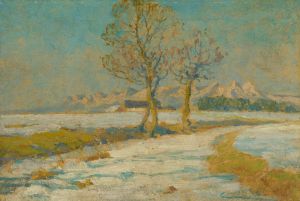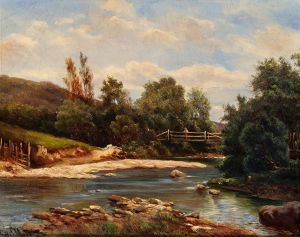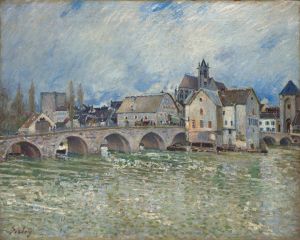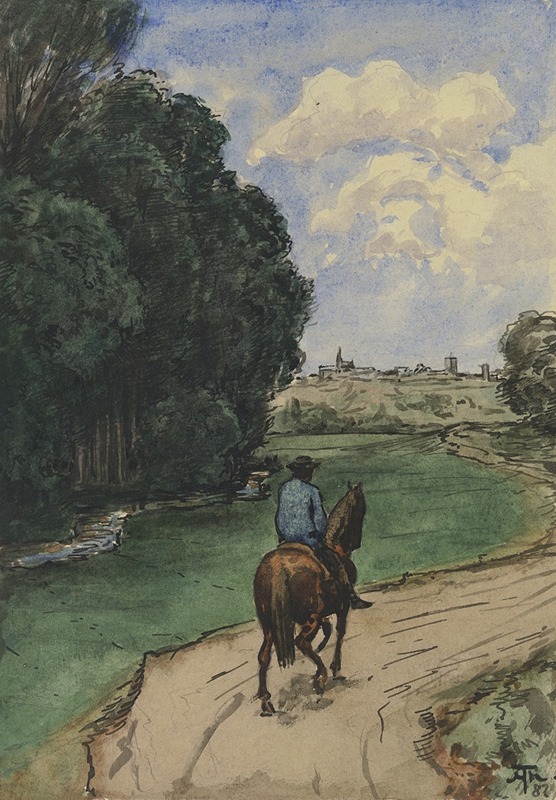
Am Waldesrand. Reiter auf einem Wege, bildeinwärts
A hand-painted replica of Hans Thoma’s masterpiece Am Waldesrand. Reiter auf einem Wege, bildeinwärts, meticulously crafted by professional artists to capture the true essence of the original. Each piece is created with museum-quality canvas and rare mineral pigments, carefully painted by experienced artists with delicate brushstrokes and rich, layered colors to perfectly recreate the texture of the original artwork. Unlike machine-printed reproductions, this hand-painted version brings the painting to life, infused with the artist’s emotions and skill in every stroke. Whether for personal collection or home decoration, it instantly elevates the artistic atmosphere of any space.
Hans Thoma's painting Am Waldesrand. Reiter auf einem Wege, bildeinwärts (translated as At the Edge of the Forest. Rider on a Path, Inward Facing) is a work by the German painter and graphic artist Hans Thoma (1839–1924). Thoma is widely recognized as one of the prominent figures in 19th-century German art, known for his landscapes, portraits, and depictions of rural life, often infused with a sense of Romanticism and symbolism.
The painting depicts a serene and naturalistic scene, characteristic of Thoma's style. It shows a rider on horseback traveling along a path at the edge of a forest. The composition directs the viewer's attention inward, as the rider moves into the depth of the painting, creating a sense of journey and introspection. The natural surroundings, including the forest and the path, are rendered with meticulous detail, reflecting Thoma's deep appreciation for the German countryside and his ability to capture its tranquil beauty.
Hans Thoma was born in Bernau in the Black Forest region of Germany, and his upbringing in this rural environment had a profound influence on his artistic themes. Much of his work reflects his connection to nature and his fascination with the landscapes of his homeland. Thoma's style is often associated with the German Romantic tradition, but his work also incorporates elements of realism and symbolism, making his art distinctive and multifaceted.
Am Waldesrand. Reiter auf einem Wege, bildeinwärts is an example of Thoma's ability to blend naturalistic detail with a subtle sense of narrative. The rider's journey into the forest can be interpreted as a metaphor for exploration, solitude, or the passage of time, though Thoma's works generally avoid overt allegory, focusing instead on the beauty and simplicity of the depicted scenes.
Thoma's career spanned several decades, and he achieved significant recognition during his lifetime. He held various prestigious positions, including serving as the director of the Karlsruhe Art Gallery. His work was celebrated for its technical skill and its ability to evoke a sense of harmony between humanity and nature.
The painting is part of Thoma's broader body of work, which includes numerous landscapes, portraits, and mythological scenes. While specific details about the creation date or current location of Am Waldesrand. Reiter auf einem Wege, bildeinwärts are not readily available, it remains an example of Thoma's enduring legacy as a painter who captured the spirit of the German landscape and its cultural resonance.








